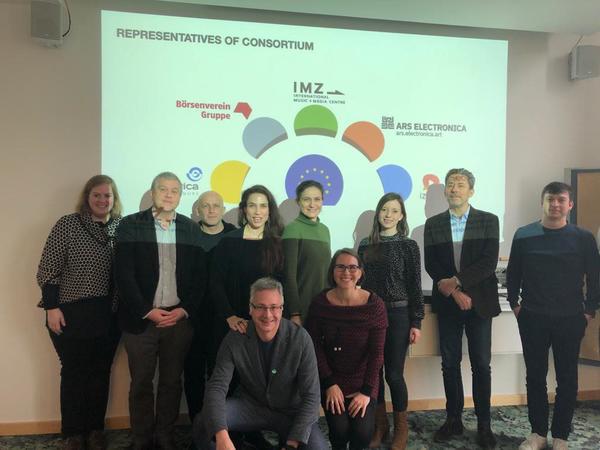“Every second book is a case of false advertising. Reading Rationales can help.”
Need Seeks Book: A change of perspective can lead to the perfect match
Customer loyalty is like love: expectations must be fulfilled, otherwise there’s frustration instead of passion and book buyers start to bail – that is, they leave the market forever. False advertising – books whose marketing addresses the “wrong” customer needs – has a long-term impact as a result. And it’s a problem that currently affects one book in two!
Help, however, is available from Reading Rationales, a standard for classifying books that was developed by technology and information provider MVB, part of the Börsenverein Group (Group of the German Publishers and Booksellers Association). In this interview, we speak with Stephanie Lange about how the book industry can use this new standard to “consciously unconsciously” become a matchmaker, and how other industries can benefit from the latest findings.

© privat
Stephanie, you’ve been asked by MVB to serve as an ambassador for the Reading Rationales. What are your duties?
I was already supporting development of the Reading Rationales as an external project manager during the market research phase. Since the official debut of the resulting book-classification standard, which took place during Frankfurter Buchmesse Special Edition 2020, I’ve been assisting with the market launch. That means I regularly present the topic to the public. I’m also the primary contact for all content-related questions from industry players, and I’m responsible for marketing the research findings and the consulting modules based on those findings.
Why were the Reading Rationales developed to begin with, and what goals is MVB trying to achieve with them?
It all started with the question of how we as an industry can increase the guidance available in today’s jungle of books. As the Quo vadis? study released by the German Publishers & Booksellers Association plainly showed, customers are leaving the German book market in droves. One key reason is that it’s so hard to get a good overview of what we offer. That’s especially true of people looking for inspiration, as opposed to those who already have a clear idea of what they want.
That’s why we at MVB, together with the Nymphenburg Group, chose to take a different approach, one that allows us to better understand our customers. The goal was to systematise the unconscious needs that lead people to buy books, and then use those needs to reach readers. The result is a set of three generic and ten specific Reading Rationales that make it possible to classify books and describe them more accurately. This works particularly well when you combine these characteristics with existing parameters, such as product segment and genre, and with thematic categories and target groups.
Our mission at MVB is to make books visible. As the central interface for exchanging product information (metadata) based on international standards, we want to provide publishers and booksellers with a tool for optimising their book-marketing activities. It also means customers will be able to lay their hands on the “right” book more quickly, easily and accurately. To that extent, we are creating a piece of infrastructure for identifying and finding books.
Artificial intelligence has played a crucial role in this standardisation. How is it being used for the Reading Rationales?
One crucial aspect for sustainable market penetration is scalability. The new system has to be used quickly and as widely as possible along the entire value chain if it is to achieve its full potential for guiding buyers and, thus, increasing sales.
That’s why, together with our partner QualiFiction, we’re using artificial intelligence to assign the Reading Rationales. The AI accesses the existing metadata from the 2.5 million titles in the Verzeichnis Lieferbarer Bücher (VLB), the catalogue of books in print used in the German-speaking world. It then identifies the main Reading Rationale for the book in question, along with any secondary rationales, and automatically adds that information to the VLB datasets.
What do the next steps look like?
The Reading Rationales will be available this year for all relevant titles in the VLB. The AI is still being trained, which means we are doing the fine-tuning together with a team of experts. The next step will be to get feedback from publishers.
In parallel, we are presenting the Reading Rationales on a regular basis and are talking with numerous partners to develop the first practical examples for using the system. The areas in question range from product development and positioning at publishing houses to presentation in various retail channels.
What would you advise publishers and booksellers who would like to make use of findings from the research?
Take a close look at the Reading Rationales, it’s worth it! After all, the topic has far-reaching implications for the business done by publishers and booksellers. At the same time, it’s complex. Anyone who is looking for a modular, one-size-fits-all solution will quickly be disappointed. You have to understand the principle behind the system in its entirety to reach the right conclusions for your own organisation and recognise where it can work for you.
On the other hand, that doesn’t mean you have to dedicate your whole life to it. It doesn’t take much to test the impact that the Reading Rationales can have. At the same time, people need to understand that using the system is going to change their existing processes. Fortunately, our consulting modules provide the necessary guidance, so that everything gets off to a smooth start. In the end, it’s all about sitting down and trying it out.
That, for example, is what the bookstore chain Reuffel did. During the past Christmas season, they spontaneously decided to use the Reading Rationales to create their own gift-finder (www.reuffel.de/geschenkefinder(opens in a new window)) for their online shop.
I’m always interested in hearing about any creative ideas people have.
Is it possible to apply the findings from the new Reading Rationales standard to other sectors, such as the film and games industry?
I believe that all the creative industries should be open to a change of perspective and think less about the product and primarily about the customer. After all, unconscious needs are just as present in those sectors and they also want to be fulfilled.
Naturally, the Reading Rationales can’t be adopted one-to-one, since they were designed for reading and buying books. But the neuroscientific principle underlying these needs clusters is a promising starting point for developing individualized marketing strategies in all creative sectors. If what results are practical, quantifiable applications such as the Reading Rationales, then there will be valuable opportunities for increasing customer loyalty and sales even beyond the book industry.
We’d love to speak with others about their experiences in this area!
Thank you very much for the interview, Stephanie!
The interview was conducted by Luisa Wagner from Frankfurter Buchmesse.
About Reading Rationales

© Dusan Petkovic
For more information (in German) about the classification standard, research findings and consulting services, please visit: www.lesemotive.de(opens in a new window)
About Stephanie Lange
Stephanie Lange is one of the most recognised specialists for marketing and sales in the German-speaking book market. She worked for more than 20 years as a manager at publishing houses and retailers, before starting her own business as a consultant and coach in 2017. Thanks to her experience on the retailer and supplier side, she is the person to contact for any and all questions concerning the customer journey in the book trade.
www.stephanie-lange.net(opens in a new window)
The interview was conducted as part of the EU project Digital Cross Over.

The interview ist part of the Digital Cross Over interview series on current trends, challenges, opportunities and best practises of the European cultural and creative industries.
Digital Cross Over is implemented by the IMZ International Music + Media Centre in cooperation with Ars Electronica, Börsenverein Group, Centrica and izneo in the framework of the Creative Europe funding programme of the European Commission. The EU project aims to demonstrate and explore the current challenges facing the creative and cultural industries: Who pays for the content created by cultural and creative professionals? How do I reach my target group in the digital age and how can I learn from players from other industries who are or have been facing similar challenges?
